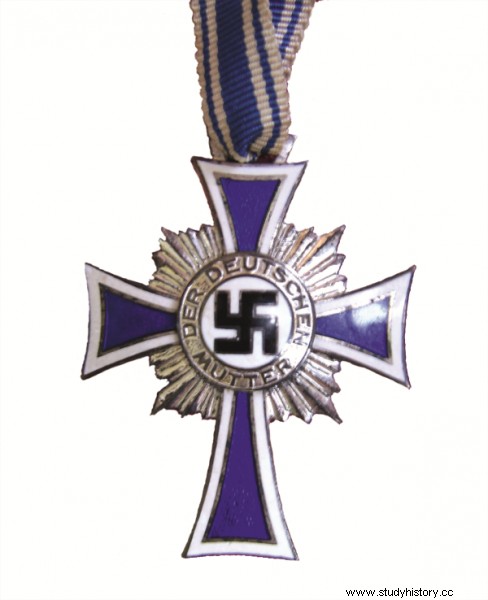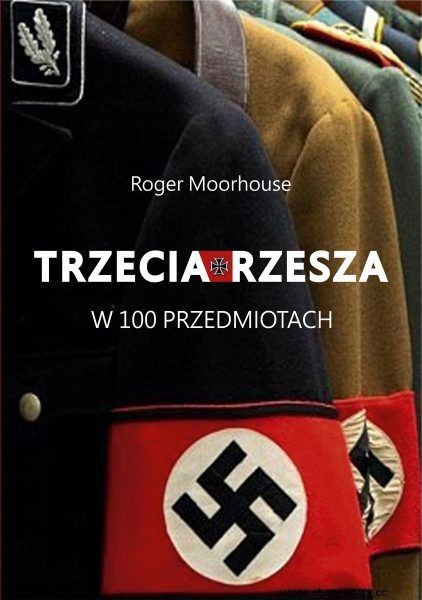In the Third Reich, everything was militarized. Teenage boys in the Hitler Youth were getting ready for military service, and workers from the Reich Labor Service marched with shovels on their shoulders instead of rifles. Even the wombs of German women have become a political battlefield.
The rewards for giving birth to a large number of offspring were nothing new. In France, the Medal of Honor of the French Family was established as early as 1920. Its German counterpart, Ehrenkreuz der Deutschen Mutter (Honorary Cross of the German Mother), had a much more political significance.
It was established in 1938, and was commonly known as Mutterkreuz, or the Mother's Cross. It resembled an elongated Iron Cross and it was covered with blue enamel with a white border. There were golden rays between his arms, and in the center a round shield with a black swastika surrounded by the words "Der Deutschen Mutter", meaning "German mother." The date of the award - December 16, 1938 - and Hitler's signature were engraved on the reverse.
Order of the Rabbit
Apparently, the criteria according to which this distinction was awarded were simple and related to the number of offspring. Mothers of four had a bronze cross, mothers of six - a silver one, and mothers of eight - a gold one.

The Mother's Cross mockingly was called the Order of the Rabbit.
However, there were other requirements as well, reflecting Nazi racial and social prejudices. Jewish women and Roma women could not receive the order, and the candidates for the decoration and their husbands had to be free from genetic diseases and of Aryan origin.
In addition, only those parents who were fidelity, lawful and morals were considered "worthy" of recognition and they did not shy away from work. As a consequence, women applying for the award were meticulously checked and 5% of applications were rejected.
The Mutterkreuz was presented for the first time on May 21, 1939, and Louise Weidenfeller from Munich was awarded, who raised eight children, so she received a cross of the highest, golden class. It is estimated that in the following years this order was awarded to over four million mothers. The broadcasting ceremonies with local party leaders were usually held on Women's Day.
With the highest honors
Members of the Hitler Youth were obliged to salute the decorated, and in addition, they could count on preferential treatment by Nazi officials and enjoyed the same privileges as those wounded in the war. Perhaps for this reason some mockingly called Mutterkreuz "the Order of the Rabbit" (Kaninchenorden).

An interesting fact is a fragment of Roger Moorhouse's book "The Third Reich in 100 Objects", published by the Znak Horyzont publishing house.
In the brutal realities of the Nazi rule, the Mother's Cross may seem like a rather banal subject, an insignificant addition to a much more important story. And yet this decoration says a lot about the reality of Nazi Germany.
Not only is it a testimony to the far-reaching militarization of society, but also shows that the Third Reich believed that it was participating in the "demographic war", just as it later participated in the traditional conflict. Mutterkreuz - like the love of eugenics and the sterilization of people considered racially undesirable - convinces us how much importance the Nazis attached to the biological condition of the nation . This order also proves the politicization of German wombs.
Source:
The above text originally appeared in Roger Moorhouse's book The Third Reich in 100 Objects, which was published by Znak Horyzont.
The title, illustrations with captions, boldface text, explanations in square brackets and subheadings come from the editors. The text has undergone some basic editing to introduce more frequent paragraph breaks.
Buy "Third Reich in 100 Items" from your favorite bookstore:
